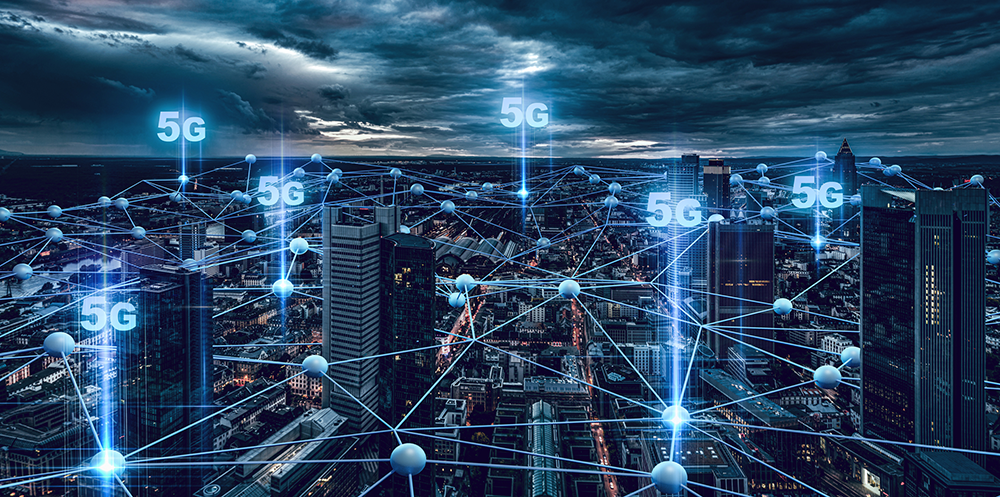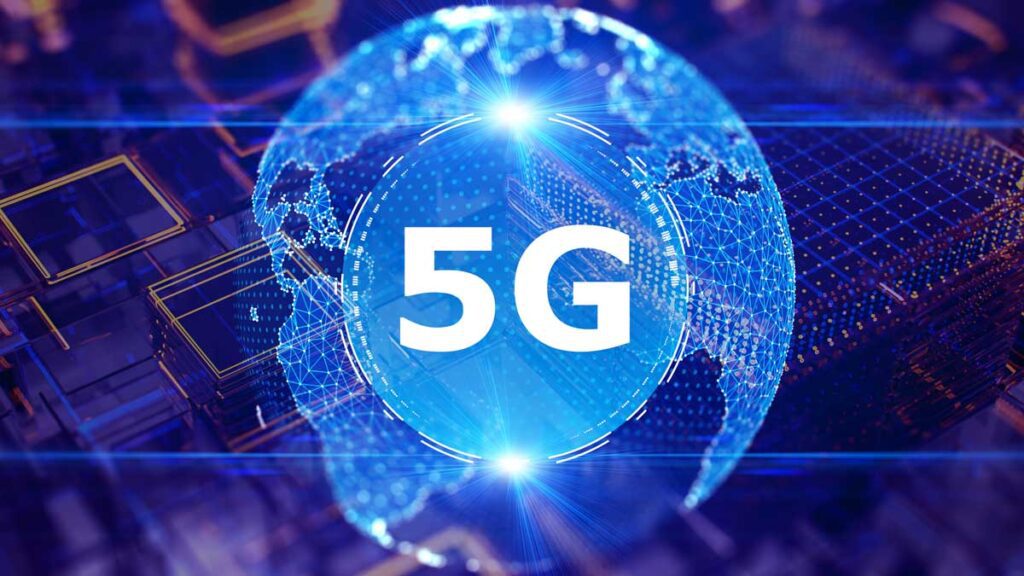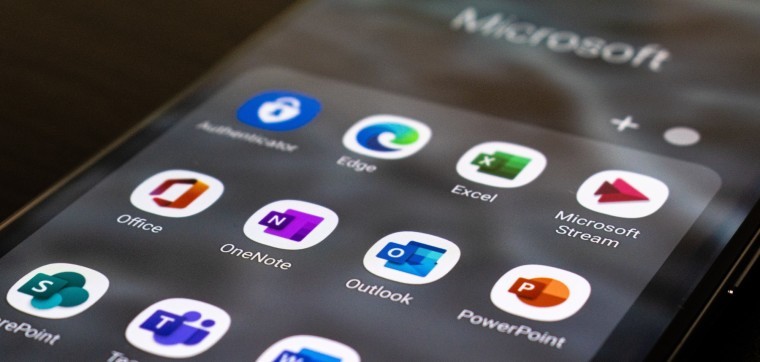
The advent of 5G technology heralds a new era of connectivity, promising lightning-fast speeds, ultra-low latency, and unprecedented levels of reliability. As the fifth generation of wireless technology, 5G has the potential to revolutionize industries across the globe, unlocking new opportunities for innovation, efficiency, and growth. This comprehensive article delves into the 5G revolution, exploring how this next-generation connectivity reshapes industries and drives transformative change.
5G Technology: Unleashing the Power of Connectivity
Before delving into its impact on industries, it’s essential to understand 5 G’s underlying technology and what sets it apart from its predecessors.
1) Key Features of 5G
5G technology boasts several key features that differentiate it from previous generations of wireless technology:
- Ultra-High Speeds:5G offers significantly faster data speeds than 4G LTE, with peak speeds potentially reaching multiple gigabits per second.
- Ultra-Low Latency:5G networks deliver ultra-low latency, reducing the delay between sending and receiving data packets. This low latency is crucial for real-time responsiveness applications, such as autonomous vehicles and remote surgery.
- Massive Connectivity:5G networks can support many connected devices simultaneously, enabling the Internet of Things (IoT) to reach its full potential. This capability opens up smart cities, industrial automation, and connected healthcare opportunities.
2) Enabling Technologies
Several enabling technologies contribute to the capabilities of 5G networks:
- Millimeter-Wave Spectrum:5G utilizes higher frequency bands, including millimetre-wave spectrum, to achieve faster speeds and greater capacity. These higher frequencies enable more data to be transmitted over the airwaves, albeit over shorter distances.
- Beamforming and MIMO:Beamforming and multiple-input multiple-output (MIMO) technologies improve network efficiency and capacity by focusing signals directly to individual users and using multiple antennas to transmit and receive data simultaneously.
- Network Slicing:5G introduces the concept of network slicing, allowing operators to create multiple virtual networks within a single physical infrastructure. This enables customization and optimization of network resources for specific use cases, such as industrial automation or augmented reality.
Impact on Industries: Driving Transformation and Innovation
The deployment of 5G networks is poised to profoundly impact various industries, revolutionizing business models, enhancing operational efficiency, and unlocking new revenue streams. Let’s explore how 5G is reshaping key sectors:
1. Healthcare: Revolutionizing Patient Care
5G is poised to revolutionize patient care delivery in the healthcare sector, enabling remote monitoring, telemedicine, and augmented reality-assisted surgeries. With ultra-low latency and high reliability, 5G networks facilitate real-time transmission of medical data, allowing healthcare providers to monitor patients remotely, deliver timely interventions, and improve patient outcomes. Additionally, augmented reality (AR) and virtual reality (VR) applications powered by 5G enable medical professionals to visualize complex anatomical structures, simulate surgical procedures, and enhance medical training and education.
2. Manufacturing: Enabling Industry 4.0
In the manufacturing industry, 5G is driving the adoption of Industry 4.0 technologies, such as smart factories, autonomous robots, and predictive maintenance systems. With its ultra-high speeds and low latency, 5G enables real-time monitoring and control of industrial processes, facilitating seamless collaboration between humans and machines. Manufacturers can leverage 5G-powered IoT sensors and devices to collect and analyze data across the production line, optimize workflows, and enhance productivity and efficiency. Additionally, 5G enables the deployment of autonomous mobile robots (AMRs) and drones for inventory management, material handling, and facility inspection, reducing labour costs and improving safety.
3. Transportation: Paving the Way for Smart Mobility
5G is paving the way for smart mobility solutions in the transportation sector, including connected vehicles, traffic management systems, and autonomous transportation. With its ultra-low latency and high reliability, 5G enables real-time communication between vehicles, infrastructure, and pedestrians, enhancing road safety, efficiency, and convenience. Vehicle-to-everything (V2X) communication powered by 5G allows vehicles to exchange information with each other and with roadside infrastructure, enabling features such as collision avoidance, traffic optimization, and emergency response coordination. Additionally, 5G supports developing and deploying autonomous vehicles, enabling them to navigate complex environments and interact with other road users with unparalleled precision and reliability.
4. Retail: Transforming the Shopping Experience
In the retail sector, 5G is transforming the shopping experience, enabling immersive and personalized in-store and online experiences. With its ultra-high speeds and low latency, 5G enables retailers to deliver rich multimedia content, such as augmented reality product demonstrations, virtual try-on experiences, and interactive shopping interfaces, enhancing engagement and driving sales. Additionally, 5G-powered IoT sensors and beacons enable retailers to track inventory in real time, optimize shelf stocking and replenishment, and deliver targeted promotions and discounts based on customer preferences and behaviour. By leveraging 5G technology, retailers can create seamless omnichannel experiences that blur the lines between physical and digital retail environments, delighting customers and driving loyalty.
5. Entertainment: Revolutionizing Content Delivery
In the entertainment industry, 5G is revolutionizing content delivery and consumption, enabling immersive experiences such as augmented reality (AR), virtual reality (VR), and ultra-high-definition (UHD) streaming. With its ultra-high speeds and low latency, 5G enables seamless streaming of high-quality multimedia content to various devices, including smartphones, tablets, and smart TVs. Content creators and distributors can leverage 5G networks to deliver immersive and interactive experiences that engage audiences in new and exciting ways, from live concerts and sporting events to virtual tours and gaming experiences. Additionally, 5G enables the adoption of edge computing and content caching solutions, reducing latency and improving the quality of service for streaming media platforms and online gaming services.
Overcoming Challenges and Barriers to Adoption
While the potential of 5G technology is immense, its widespread adoption faces several challenges and barriers that must be addressed:
- Infrastructure Investment: Deploying 5G networks requires significant investment in infrastructure, including new base stations, small cells, and fibre-optic backhaul. Infrastructure deployment costs can be substantial, particularly in rural or underserved areas with low population density.
- Spectrum Allocation: Spectrum availability is critical for 5G deployment, as it determines the capacity and performance of wireless networks. Governments and regulatory bodies must allocate sufficient spectrum for 5G use and ensure efficient spectrum management to avoid interference and congestion.
- Security and Privacy Concerns: As with any wireless technology, 5G networks are vulnerable to cybersecurity threats such as data breaches, malware attacks, and network intrusions. Security measures such as encryption, authentication, and access control are essential to safeguarding 5G networks and the sensitive data transmitted.
- Regulatory Challenges: Regulatory frameworks and policies, including spectrum licensing, zoning regulations, and environmental considerations, can impact the deployment and operation of 5 G networks. Governments must create an enabling regulatory environment that incentivizes investment in 5G infrastructure while protecting public interests and ensuring fair competition.
Embracing the 5G Future
The 5G revolution holds immense promise for industries worldwide, unlocking new opportunities for innovation, efficiency, and growth. From healthcare and manufacturing to transportation, retail, and entertainment, 5G is reshaping industries and driving transformative change across the globe. As organizations embrace the 5G future, they must overcome challenges and barriers to adoption, including infrastructure investment, spectrum allocation, security concerns, and regulatory challenges. By leveraging the power of 5G technology, organizations can seize new opportunities, enhance competitiveness, and create value for customers, stakeholders, and society. As we stand on the brink of a new era of connectivity, the possibilities of the 5G revolution are limited only by our imagination.



